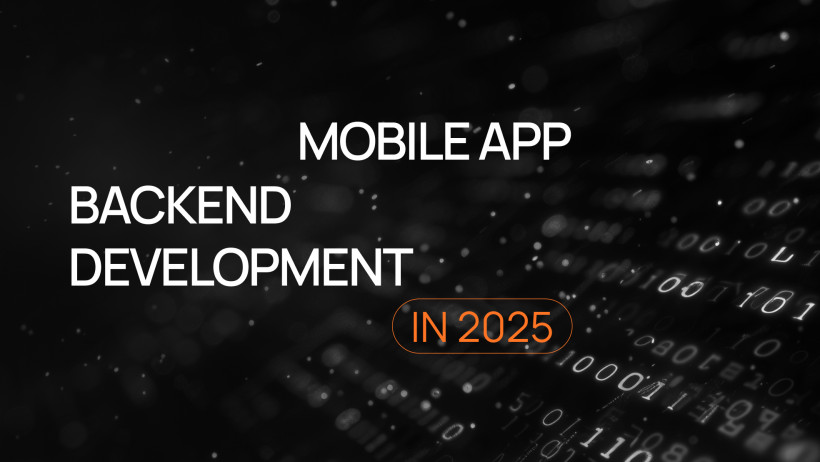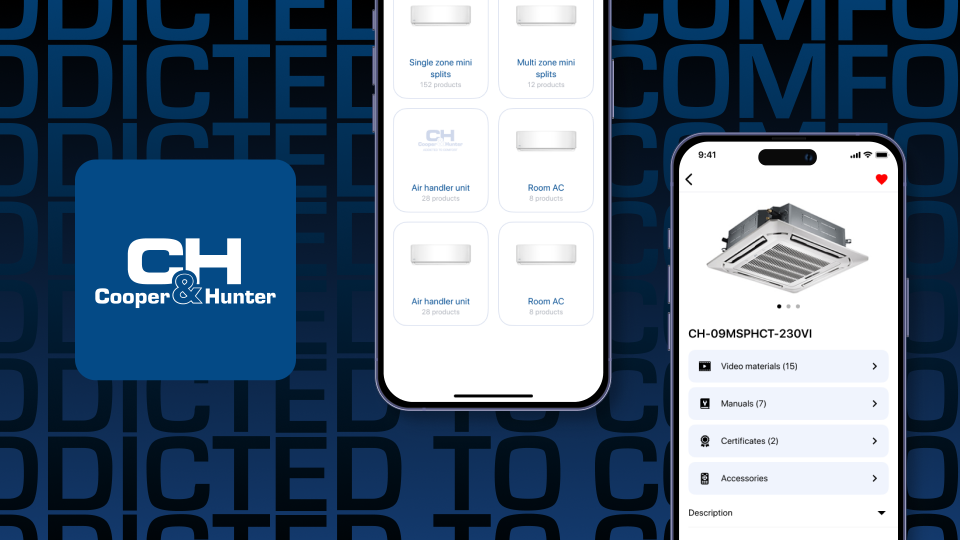Behind every successful mobile app lies an invisible powerhouse: the backend. It doesn’t matter if your app is for food delivery, fitness tracking, or a fintech service — without a strong backend, it simply won’t run smoothly. Think of it as the engine of a car: your users don’t see it, but without it, the shiny design and fancy features go nowhere.
In 2025, smart choices in backend for mobile apps 2025 can make the difference between an app that scales easily and one that collapses under pressure.. Business owners and founders are realizing that backend planning is not just a technical detail, it’s a strategic investment. Let’s dive into what you need to know about mobile app backend development today.
What Is Backend Development for Mobile Apps?
In simple terms, the backend is the part of your app that works behind the scenes. While the frontend is what your users see and interact with, the backend manages the data, servers, and logic that make everything function.
The main components include:
- Servers: where your app’s data lives and gets processed. Proper mobile app server setup is essential to ensure speed, reliability, and security from day one.
- Databases: storage for user profiles, settings, payments, and more.
- APIs: connectors that let the app communicate with other services.
Without these, your app would be nothing more than static screens. In 2025, backend for mobile apps is about much more than just running code, it’s about ensuring scalability, security, and real-time performance.
Backend Options Available in 2025

Not every app needs the same backend approach. In 2025, founders typically choose between three paths:
1. Custom Backend (Built from Scratch)
This means creating a unique app backend architecture tailored to your business. It offers maximum flexibility but comes with higher upfront costs and longer development times. Ideal for apps that require specific, complex workflows or handle sensitive data.
2. BaaS (Backend-as-a-Service) Providers
Platforms like Firebase, AWS Amplify, or Supabase offer ready-to-use backend services for apps. They handle hosting, databases, authentication, and push notifications so your developers can focus on features. This is perfect for startups looking to launch quickly without reinventing the wheel.
3. Hybrid Approaches
Sometimes, the best option is a mix. You might use BaaS for authentication and a custom backend for unique business logic. This balance can save costs while giving you flexibility where it matters most.
Choosing the Right Backend Architecture
The app backend architecture you choose is one of the most critical decisions in development. It affects not only how your app performs today but also how easily it can grow, integrate new features, and stay cost-effective in the long run. In 2025, founders have several proven models to consider:
Monolith vs Microservices
-
Monolith
A monolithic backend means everything — logic, APIs, and database interactions — lives in one large codebase. This setup is fast to build and launch, making it a good choice for MVPs or early-stage startups. However, as the app grows, scaling becomes tricky. Any small change requires redeploying the entire system, which can slow down innovation.
-
Microservices
With microservices, the backend is divided into smaller, independent services that communicate through APIs. For example, user authentication, payments, and notifications can all run separately. This model offers greater scalability, flexibility, and reliability: if one service goes down, the others keep running. The trade-off is that it requires more skilled developers, advanced DevOps practices, and careful planning to manage effectively.
Business takeaway: If you’re aiming for quick time-to-market, monolith may be fine at first. But if you expect rapid growth, microservices are worth the upfront investment.
Serverless vs Traditional Hosting
-
Serverless Architecture
Platforms like AWS Lambda or Google Cloud Functions let you pay only for the computing power you use. This makes serverless ideal for apps with unpredictable traffic or seasonal spikes, such as event booking platforms or delivery services. It eliminates the hassle of server management and ensures high availability.
-
Traditional Hosting
Dedicated servers or virtual machines give you more control over performance, configuration, and security. This is often the preferred option for industries with strict compliance needs (e.g., healthcare or banking). However, it usually involves higher maintenance costs and requires an in-house or outsourced DevOps team.
Business takeaway: Serverless is cost-effective for startups, while traditional hosting still has a place for enterprises with complex compliance requirements.
Real-Time Capabilities
In 2025, real-time features are no longer “nice to have”, they’re essential. Users expect instant updates across devices, whether they’re tracking a food delivery, chatting in a social app, or receiving live financial data.
Modern backends often use real-time databases (like Firebase Realtime Database or AWS AppSync) to deliver this functionality. Combined with WebSockets or GraphQL subscriptions, they allow your app to stay interactive and engaging.
Business takeaway: If your app relies on speed, communication, or live updates, real-time backend capabilities should be a top priority.
Key Functionalities to Plan For

When planning backend services for apps, founders often underestimate what’s needed beyond “just a database.” Here are the essentials:
1 . Authentication and User Management
Secure sign-up, login, and role-based access. Think OAuth, two-factor authentication, and data encryption.
2 . Data Storage and Sync
Users expect their data to sync seamlessly across devices. A cloud backend makes this possible.
3 . Push Notifications
Essential for engagement, whether it’s reminding users of a cart or sending real-time updates.
4 . Analytics and Third-Party Integrations
Tools like Google Analytics, payment gateways, or CRMs all require backend support.
Without these core elements, even the most polished app won’t deliver a satisfying user experience.
Scalability and Security Considerations
As your app grows, your backend needs to handle more traffic without crashing. That’s where scalability comes in.
- Horizontal scaling: adding more servers to share the load.
- Cloud-native solutions: providers like AWS, Azure, and GCP make scaling more efficient in 2025.
But with growth comes responsibility: backend security best practices are a must. This includes:
- Data privacy compliance (GDPR, HIPAA, or industry-specific regulations).
- Encryption at rest and in transit.
- Regular backups and disaster recovery.
- 24/7 monitoring for suspicious activity.
Cost Considerations for Backend Development
Backend infrastructure costs are often overlooked during planning, but they can make or break a project. Here’s what to keep in mind:
- Upfront vs Ongoing Costs: custom backends cost more initially, while BaaS solutions spread expenses over time.
- Third-Party Services Pricing: tools for notifications, analytics, or payments often come with per-user or per-transaction fees.
- Maintenance and Support: even “serverless” setups require monitoring, updates, and optimization.
In short: always budget not just for building, but for operating your backend long term.
How WEZOM Designs Backend Systems for Growth

At WEZOM, we’ve seen firsthand how the wrong backend decisions can slow down growth or even cause apps to fail. Many apps look great on the surface but struggle when user numbers grow, features expand, or regulations change. That’s why we follow a structured, growth-oriented approach to backend development:
Discovery-Based Backend Planning
We never start with code, we start with strategy. Our team analyzes your business model, user journeys, and future scaling needs before recommending an app backend architecture. This ensures the system is not only right for today but also ready for the next stage of growth. We map out potential integration points, compliance requirements, and even monetization strategies so the backend truly supports your business goals.
Scalable Cloud Infrastructure
In 2025, flexibility is everything. Our backend solutions are designed on cloud backends such as AWS, Firebase, or hybrid setups that allow for smooth scaling. Whether your app suddenly doubles its user base or adds complex features like real-time databases or AI integrations, the infrastructure adapts without disrupting performance. We emphasize cost-efficiency, so you only pay for the resources you use while keeping uptime at the highest level.
24/7 Monitoring and Proactive Support
A backend doesn’t sleep, and neither does our support team. We provide continuous performance monitoring, proactive maintenance, and real-time issue resolution. This includes automatic backups, security patching, and compliance updates so your app always meets the latest standards. If a spike in traffic occurs or a security alert is triggered, we step in immediately before it impacts your users.
Long-Term Partnership
We don’t just hand over a backend and walk away. Our approach is to build long-term partnerships, guiding clients through upgrades, new integrations, and scaling decisions. As your app evolves, we adjust the backend to match ensuring it remains an asset, not a bottleneck.
Conclusion
A great app is more than a slick design or clever features. Its success depends on a solid backend for mobile apps in 2025 — one that’s scalable, secure, and cost-effective. Whether you choose a serverless architecture, a BaaS solution, or a fully custom build, the backend is your app’s foundation.
For business owners, the key takeaway is simple: treat your backend as a long-term investment, not an afterthought. The right choices today will save you money, stress, and downtime tomorrow.

At WEZOM, we specialize in crafting backend systems that empower apps to scale, adapt, and thrive. If you’re ready to future-proof your mobile app, let’s talk about your backend strategy.


